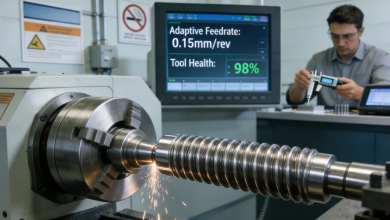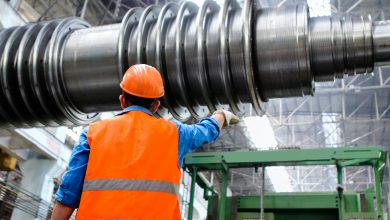With the focus on bringing down costs, driving sustainability, and growing customer base, manufacturers are under increased pressure to upgrade their supply chains in order to move goods along it at faster speeds. Many have turned towards digitisation, increasing reliance on AI to transform supply chains and help achieve commercial and sustainability targets. Here are five different ways that AI can increase resilience, and future-proof, manufacturing supply chains…
- Forecasting demand
Of all industries, manufacturing in particular relies on steady, predictable, demand in order to be able to efficiently move goods along the supply chain. This is the case under normal circumstances but, as the pandemic highlighted, there is a need for more accurate predictive tools that can react in real-time to events that influence demand.
Forecasting is a real focus for many businesses in 2022 and, by harnessing the power of AI, it is possible to link demand with supply and optimise the manufacturing process. In real terms, this means cutting storage and handling costs by only needing to store and handle the correct quantity of goods, and always having the correct stock levels to meet changing demand – increasing resilience and, ultimately, customer and client retention.
- Improve sustainability
Both consumers and manufacturers are becoming increasingly concerned with creating more sustainable practices, with almost 60% of manufacturers feeling pressure to improve their sustainability credentials. By optimising their supply chain and logistics, manufacturers can significantly reduce their carbon footprint. AI can analyse hugely complex datasets to determine the best possible outcomes within the constraints of commercial objectives, finding the best methods to transport goods to maximise vehicle loads, reduce pollution and avoid delays.
- Balancing stock and managing working capital
Demand for manufacturing continues to increase year-on-year and, when this demand can’t be met due to restrictions on the flow of goods, or a shortage on materials, it can lead to massive price hikes as seen during the reintroduction of strict COVID measures in countries such as China and Hong Kong.
As a result, manufacturers need to be more agile in balancing their stock and managing working capital. Supply chain managers have been forced to improve the efficiencies of their inventory tracking and management; an area in which AI can be a useful asset. AI platforms, like the one offered by 7Bridges, can ensure that stock is held in the right locations; accounting for when it is needed and where it is needed. AI can also help manage capital effectively; increasing customer service levels and speed without unnecessarily increasing costs.
- Optimising logistics and transportation
There is a huge variation in transportation costs, with prices continuing to rise due to reduced shipping capacities, rising fuel costs and increased competition within the manufacturing industry for space. Manufacturers also need to contend with external factors that can, at best, impact costs when schedules need to be changed last minute or, at worst, lead to missed delivery slots that are an unnecessary expense.
AI can help companies to make optimised decisions ahead of time by analysing vast amounts of datasets and deciding when, where and how to route each delivery to ensure both time and cost is kept to a minimum.
- Improve procurement and carrier selection
With data often spread across multiple systems with incompatible information and structures, procurement in the manufacturing industry has struggled to undergo any major upgrades or improvements.
AI can improve the procurement process by bringing full transparency to historical costs of existing providers, as well as securing the best possible rates from new providers. It also enables businesses to deploy intelligent multi-carrier switching when they ship goods, utilising AI to identify the best performing carrier in real-time and lock in the best available rates.
In addition to this, there is also the possibility of creating a so-called “digital twin”, which can give a business the opportunity to run stress-tests and simulations on a virtual representation of their supply chain’s components. It can allow them to model various scenarios, and forecast the impact of business decisions or potential contracts with new suppliers.



